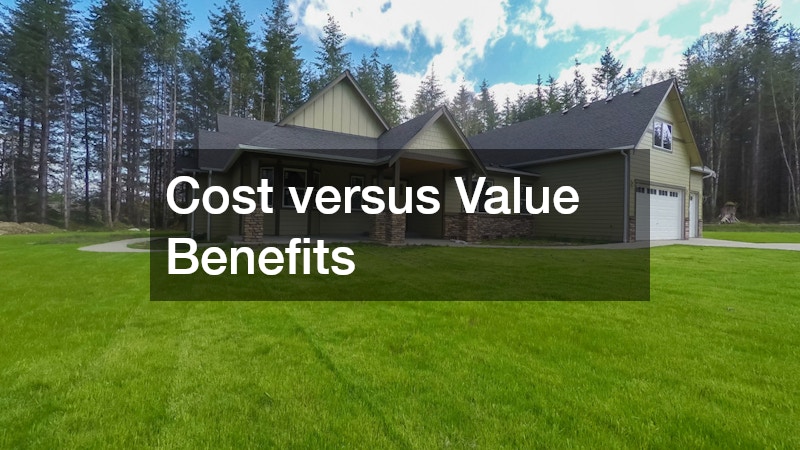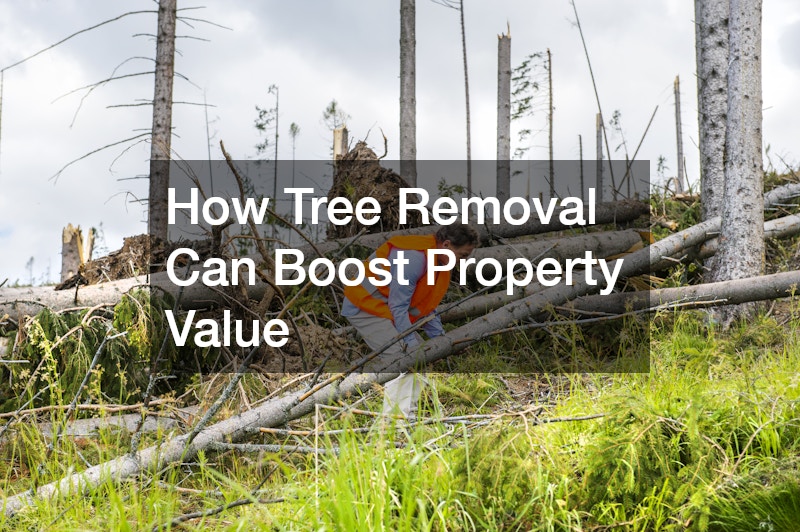In this article, we will explore how the strategic removal of trees can positively impact property value. The decision to remove trees from a property is not one to be taken lightly, as trees can offer aesthetic and environmental benefits. However, there are specific scenarios where tree removal can significantly enhance a property’s value. We will delve into the reasons and methodologies behind this approach, addressing common questions and concerns.
By understanding these factors, homeowners can make informed decisions that optimize their property’s value and appeal.
How Tree Removal Increases Property Value
Improvement of Curb Appeal
Removing certain trees can draw attention to the property’s architectural features, creating a more striking first impression for potential buyers. When trees obscure or overshadow the design elements of a home, their removal can reveal the beauty of the structure and landscape. A well-maintained property with clear lines of sight offers greater aesthetic value and can lead to higher property prices.
Curb appeal is a critical factor in real estate as it forms the first impression for buyers. By showcasing the architecture and landscape design more prominently, tree removal can make a property appear more inviting and valuable. Buyers are often willing to pay more for homes where they can visualize their own style and design priorities.
Moreover, strategic tree removal can enhance the visibility of key selling points, such as unique architectural elements or meticulously landscaped gardens. This broader visibility not only boosts the attractiveness of a property but also elevates its market value. Thus, trimming or removing trees that detract from a home’s curb appeal can be a worthwhile investment.
Prevention of Property Damage
Removing trees that pose potential risks is crucial for maintaining the integrity of a property’s structures. Overgrown trees with extensive root systems can cause damage to foundations, driveways, and sidewalks. Additionally, trees too close to a house can become hazards in severe weather, leading to costly repairs.
Hazardous trees can become liabilities during storms, potentially falling and causing damage to homes and vehicles. By proactively removing such trees, homeowners can avoid these risks and prevent significant financial implications. This aspect of safety contributes to an overall increase in property value as potential damage concerns are alleviated.
Moreover, a property free from hazardous trees ensures a safer environment for residents and visitors, reducing liability concerns. A safe and well-maintained property appeals to buyers who prioritize security for their families. Preventive tree removal, therefore, plays a pivotal role in safeguarding property value.
Identifying if a Tree Needs to be Removed
Assessing Tree Health
Homeowners should regularly evaluate trees for signs of poor health, such as dying branches, fungal growth, or large cracks. Recognizing these issues early can inform decisions about removal before a tree poses a greater risk. Consulting with an arborist can provide expert insight into a tree’s health status and prospects.
Dead or dying trees are not only unsightly but also prone to falling, potentially causing damage. Regular health assessments can assist in identifying which trees may no longer be viable or may pose future problems. Keeping trees healthy and removing the problematic ones ultimately contributes to better property aesthetics and safety.
Moreover, a professional assessment ensures that healthy trees providing shade or aesthetic value are preserved. This balance maximizes a property’s environmental and economic benefits, with removal decisions focused solely on trees that threaten property value. Healthy tree management can thus enhance both the beauty and value of a property.
Impact on Landscape Design
Trees can play a crucial role in landscape design, but not all trees contribute positively. Evaluating whether a tree enhances or detracts from the design aesthetic is critical when considering removal. Trees that are overgrown, misplaced, or obscure key focal points might need to be removed to enhance the overall visual appeal.
Landscapers may recommend removing trees that disrupt symmetry or balance within a carefully curated design. By aligning tree placement with the existing architecture and garden plans, you support a harmonious and appealing environment. The presence or absence of certain trees directly impacts visual composition and, therefore, property value.
The Considerations and Limitations of Tree Removal
Legal and Environmental Factors
Before removing trees, it is imperative to understand the legal restrictions and permits required by local municipalities. Many areas have specific laws protecting certain tree species or preserving urban tree coverage. Compliance with these regulations is important to avoid potential fines and to ensure environmentally responsible tree removal practices.
Environmental impact is another significant consideration when removing trees, as trees play a crucial role in biodiversity and ecological balance. Trees provide habitats for wildlife and contribute to air quality, necessitating thoughtful removal practices. Balancing property improvement with ecological responsibility requires careful planning and consultation with environmental professionals.
Cost versus Value Benefits
Tree removal can be a costly endeavor, and weighing the financial implications against potential property value increases is key. The cost often depends on the size and location of the tree, as well as any additional work to repair or enhance the landscape afterward. Homeowners should calculate whether the expense aligns with the anticipated benefits in property value.
Conversely, the increase in property value from improved aesthetics and reduced risks can exceed initial costs. Prospective buyers might be swayed by a property’s attractive and safe environment, potentially offering higher purchase prices. Therefore, evaluating the return on investment is crucial when contemplating tree removal as a value-enhancing measure.
We emphasize the importance of consulting with professionals for advice tailored to individual properties, ensuring both safety and value optimization. Ultimately, while trees can greatly add to a property’s charm and environment, their removal, in specific cases, can unlock unseen value and appeal, making the property more desirable to potential buyers.

